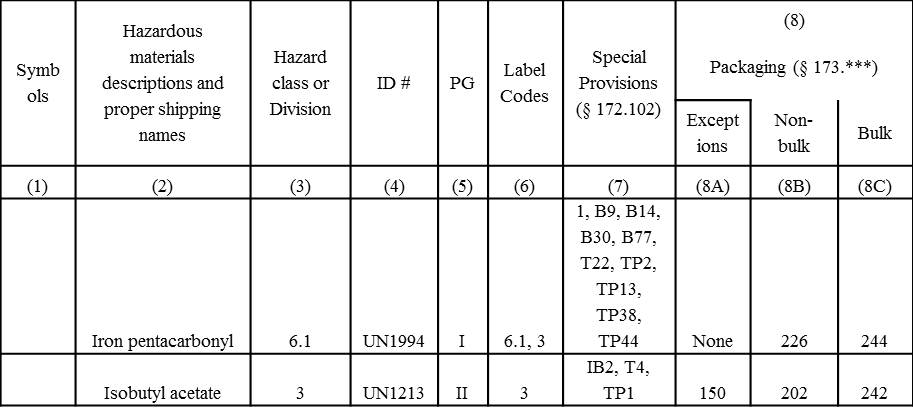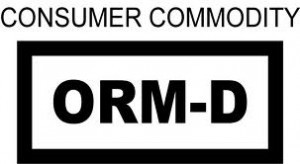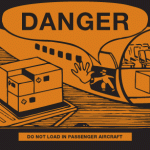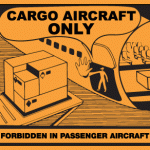SUBJECT LINE: Consumer Commodity how did this change in 2021
DATE: Feb 7, 2021, 2:39 PM
Question:
Authorization for use of ORM-D Classification (Consumer Commodity)
I ship small quantity packages of r12 refrigerant by air starting in about a month it is still a consumer commodity.
Is it still exempted from all the placards and and paper work.
How do I need to mark it.
Consumer Commodity and the UN1028?
Can you explain what I need
I would appreciate it.
My reply the next day:
Thank you for contacting me. I will try to answer your questions below.
- The consumer commodity exception is no longer available for use after 12.31.20.
Read: What is the Consumer Commodity Exception?
Read: Authorization for use of ORM-D Classification (Consumer Commodity) Extended to end of 2020!
- Your HazMat may still be shipped according to an exception from full regulation at 49 CFR 173.306 for limited quantities of compressed gases. This includes the limited quantity exception which is very similar to the consumer commodity exception.
- The requirements to ship this HazMat as a limited quantity are at 49 CFR 173.306(i).
- It may be eligible for the exception at 49 CFR 173.306(j) but only if in a receptacle with a capacity of less than 50 mL. Yours has a capacity of 1,183 mL (40 oz).
- You are correct that – among other exceptions – placards and shipping paper are not required if transportation is by ground within the U.S. subject to the limited quantity exception.
- It does need to display the limited quantity mark as described at 49 CFR 172.315.
I hope this helps. Please contact me with any other questions.
More questions:
Thanks
Hi do I ship by air I never do over 40oz. A lot of 4-8 Oz. Shipments
Contact me the next time your USDOT, IATA (air), or IMO (vessel) training is due to expire. |
My reply:
That may quantity of that HazMat may be transported as a limited quantity by air subject either to USDOT regulations or – more likely – the Dangerous Goods Regulations of the International Air Transport Association.
Even those sizes (4-8 oz) are not eligible for the exception at 49 CFR 173.306(j): 4 oz = 118 mL.
More questions, part 2:
I know I can’t do International only Domestic but I can’t find a clear answer on shipping by air.
Every thing on USPS site really reads very confusing know one seems to know.
I still don’t know. I appreciate you getting back with me.
My clarification (This was my first indication the carrier was the U.S. Postal Service):
Please see below.
- You can ship international by air.
- To ship international by air you will have to use a commercial carrier (FedEx or UPS). Not USPS.
- USPS does allow for transport of HazMat, but not much, and not by air, and their regulations are confusing.
Are you able to use a commercial air carrier?
More questions (and some venting about USPS!):
I will have to ck on other carriers.
I just lower 48 states.
USPS all reads crazy and when you ask them about it they twist it all l don’t know that they even can tell for sure.
Thanks
Contact me with any questions you may have about the transportation of hazardous materials by air, highway, vessel, or rail International and Domestic Daniels Training Services, Inc. 815.821.1550 |
My shameless plug:
In order to offer for transport with a commercial carrier you must have USDOT HazMat Employee training. I can provide this.
Reply:
Daniel,
I’m going to order some boxes and go back to ground shipping. USPS is confusing on the shipping.
I have the EPA certificate to handle the R12 and have shipped both ground & air with them.
The shipping changes and the way it reads contradicts its self.
At the post office they don’t have a clue.
I know how to ground ship it. So it will work out.
Thanks for getting back with me.
My final reply and summation:
Please see below.
- Regardless of EPA regulations, it is a hazardous material regulated by USDOT.
- It must be offered for transportation per USDOT regulations.
- This requires USDOT HazMat Employee training.
- I can provide this training or there are many other sources.
Please contact me with any other questions.
Like this article? Subscribe to my Monthly Newsletter No marketing emails! |
Conclusion:
As this person learned, USPS does allow for the transport of some HazMat, but I have found there is often a disconnect between the published regulations and what the Postal Worker at your local branch tells you. My advice for any business is to use a commercial carrier for transport of HazMat or dangerous goods. And, of course, contact me to get the training you need to ship hazardous materials or dangerous goods safely.










